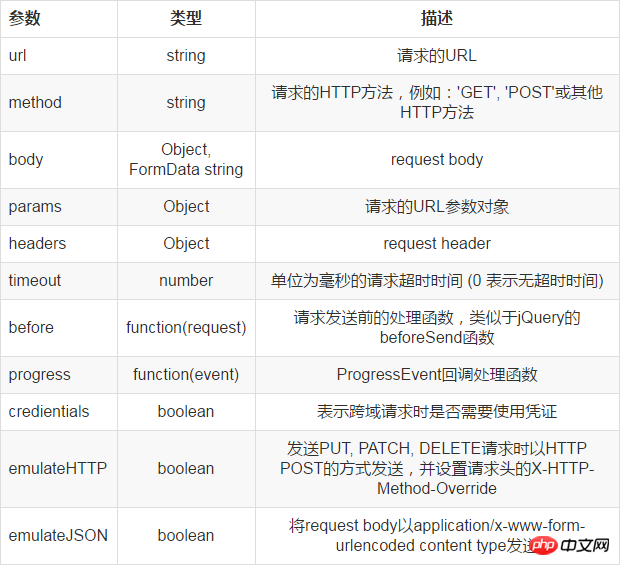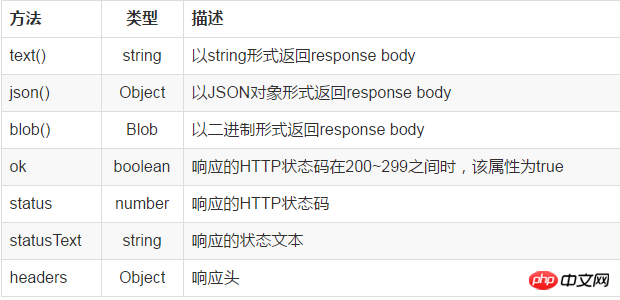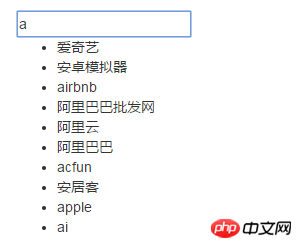Rumah >hujung hadapan web >tutorial js >VUE中如何使用Vue-resource完成交互
VUE中如何使用Vue-resource完成交互
- 不言asal
- 2018-06-29 15:01:333331semak imbas
本篇文章主要介绍了VUE中使用Vue-resource完成交互,内容挺不错的,现在分享给大家,也给大家做个参考。
本文介绍了VUE中使用Vue-resource完成交互,分享给大家,具体如下
使用vue-resource
引入vue-resource
vue-resource就像jQuery里的$.ajax,是用来跟后端交互数据的,vue-resource是vue的一个插件,所以我们在开始使用vue之前,需要先引入vue-resource.js这个文件
<script src='js/vue.js'></script> <script src='js/vue-resource.js'></script>
基本语法
// 基于全局Vue对象使用http Vue.http.get('/someUrl', [options]).then(successCallback, errorCallback); Vue.http.post('/someUrl', [body], [options]).then(successCallback, errorCallback); // 在一个Vue实例内使用$http this.$http.get('/someUrl', [options]).then(successCallback, errorCallback); this.$http.post('/someUrl', [body], [options]).then(successCallback, errorCallback);
在发送请求后,使用then方法来处理响应结果,then方法有两个参数,第一个参数是响应成功时的回调函数,第二个参数是响应失败时的回调函数。
options对象

实例:
GET请求
在下面的实例中,我们做一个求和的功能,效果如下图:

get方法:
this.$http.get('/someUrl', [options]).then(function(response){
// 响应成功回调
}, function(response){
// 响应错误回调
});
在该实例中,我们准备了一个php文件,该文件主要接收前台通过get传过来的参数,并计算两个参数的和,代码如下:
<?php $a=$_GET['a']; $b=$_GET['b']; echo $a+$b; ?>
html代码:
<p class="container" id="box" style="margin-top:100px"> <input type="text" name="" id="" v-model="a" />+ <input type="text" name="" id="" v-model="b" /> = <input type="button" value="求和" class="btn btn-info" @click="add()"/> </p>
<script type="text/javascript">
new Vue({
el:"#box",
data:{
a:"",
b:""
},
methods:{
add:function(){
this.$http.get("get.php",{
"a":this.a,
"b":this.b
}).then(function(response){
alert(response.data)
},function(response){
alert(response.status)
}
)
}
}
})
</script>
说明:response是后台返回的参数,它包括以下属性:

POST请求
<?php $a=$_POST['a']; $b=$_POST['b']; echo $a+$b; ?>
new Vue({
el:"#box",
data:{
a:"",
b:""
},
methods:{
add:function(){
this.$http.post("post.php",{
"a":this.a,
"b":this.b
},{
emulateJSON:true //POST请求需要将emulateJSON设置为true
}).then(function(response){
alert(response.data)
},function(response){
alert(response.status)
}
)
}
}
})
JSONP
jsonp的语法跟get,post差不多,只是传递的数据不一样。接下来,我们用jsonp来完成一个百度搜索的功能。
1.首先准备一个实例的接口,这个接口是百度的搜索接口(我们可以自己找一些接口作为测试),如下:
https://sp0.baidu.com/5a1Fazu8AA54nxGko9WTAnF6hhy/su?wd=a&cb=show
2.准备布局
<p class="container" id="box" style="margin-top:100px">
<input type="text" placeholder="请输入搜索内容" />
<ul>
<li >22222</li>
</ul>
<p >暂无数据...</p>
</p>

3.功能描述
当我们在搜索框中输入搜索的内容的时候,下面的列表会显示出根据我们输入的内容联想的词语。按键盘的上下键,可以上下选择列表中的词语,按enter键的时候,会执行搜索
4.代码实现
首先我们准备一个myData数组,存放联想的词语。t1是input框输入的值,如下
<input type="text" placeholder="请输入搜索内容" v-model="t1" />
data:{
myData:[],
t1:""
}
在搜索框中的输入内容的时候,执行一个方法,这个方法主要用于发送一个请求,获取输入内容的联想词语。
<input type="text" placeholder="请输入搜索内容" v-model="t1" @keyup="search()"/>
methods:{
search:function(ev){this.$http.jsonp("https://sp0.baidu.com/5a1Fazu8AA54nxGko9WTAnF6hhy/su",{
"wd":this.t1
},{
jsonp:"cb" //callback名字,默认是callback
}).then(function(response){
this.myData=response.data.s
},function(response){
alert(response.status)
}
)
}
}
执行到这一步,列表中已经可以显示出我们搜索的联想词语了,如下图:

下面的我们可以实现,按上下键的时候,选择词语
<p class="container" id="box" style="margin-top:100px">
<input type="text" v-model="t1" @keyup="search($event)" @keydown.down.prevent="changeDown($event)" @keydown.up.prevent="changeup()"/>
<ul>
<li v-for="(value, index) in myData" :class="{gray:index==now}">{{value}}</li>
</ul>
<p v-show="myData.length==0">暂无数据...</p>
</p>
/*data数据*/
data:{
myData:[],
t1:"",
now:-1
}
/*上下键的方法*/
changeDown:function(){
this.now++;
if(this.now==this.myData.length){
this.now=-1;
}
this.t1=this.myData[this.now];
},
changeup:function(){
this.now--;
if(this.now==-2){
this.now=this.myData.length-1;
}
this.t1=this.myData[this.now];
}
完整代码:
初识vue
<p class="container" id="box" style="margin-top:100px">
<input type="text" v-model="t1" @keyup="search($event)" @keydown.down.prevent="changeDown($event)" @keydown.up.prevent="changeup()"/>
<ul>
<li v-for="(value, index) in myData" :class="{gray:index==now}">{{value}}</li>
</ul>
<p v-show="myData.length==0">暂无数据...</p>
</p>
以上就是本文的全部内容,希望对大家的学习有所帮助,更多相关内容请关注PHP中文网!
相关推荐:
Atas ialah kandungan terperinci VUE中如何使用Vue-resource完成交互. Untuk maklumat lanjut, sila ikut artikel berkaitan lain di laman web China PHP!
Artikel berkaitan
Lihat lagi- Analisis mendalam bagi komponen kumpulan senarai Bootstrap
- Penjelasan terperinci tentang fungsi JavaScript kari
- Contoh lengkap penjanaan kata laluan JS dan pengesanan kekuatan (dengan muat turun kod sumber demo)
- Angularjs menyepadukan UI WeChat (weui)
- Cara cepat bertukar antara Cina Tradisional dan Cina Ringkas dengan JavaScript dan helah untuk tapak web menyokong pertukaran antara kemahiran_javascript Cina Ringkas dan Tradisional

